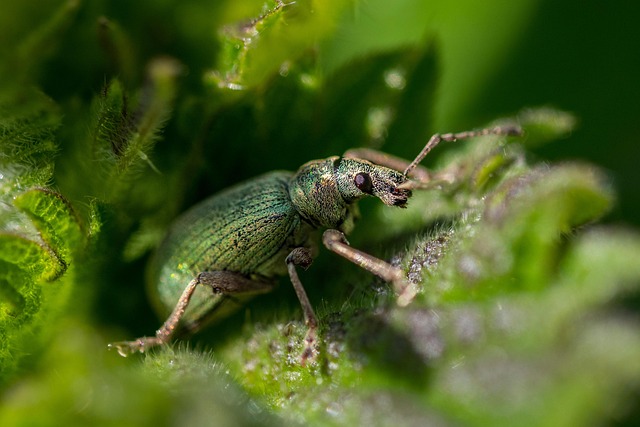Psocids (book lice) pose significant issues in homes and businesses due to their rapid breeding rate and varied behaviors. Early detection through regular, comprehensive inspections by professional psocids control services is vital. Inspectors use advanced techniques to identify breeding sites, enabling tailored prevention strategies that combine structural fixes, cleaning, and integrated pest management. Regular inspections are key to effectively managing and preventing psocid infestations.
Psocids, also known as book lice, are tiny pests that can infiltrate homes and businesses, causing damage to books, fabrics, and other materials. Effective psocids control services rely on thorough inspections to identify activity and breeding sites. This article guides you through understanding common psocid types, the significance of regular inspections, advanced inspection techniques, and preventive measures to eliminate breeding grounds, ensuring a comprehensive approach to psocids control.
Understanding Psocids: Common Types and Their Behavior
Psocids, commonly known as book lice or bark lice, are tiny insects that belong to the family Psocidae. While they may seem insignificant, these pests can cause significant issues in both residential and commercial settings. There are numerous species of psocids, with common types including shadow bugs, litter bugs, and bark lice. Each has unique behaviors and preferences, but all share a tendency to thrive in hidden, moist environments, making thorough inspections crucial for early detection.
Understanding the behavior of these insects is essential when it comes to effective psocids control services. Shadow bugs, for instance, prefer dark crevices and are often found in carpeting, furniture, and wall voids. Litter bugs are known to inhabit cluttered areas, while bark lice primarily reside in wooden structures, tree bark, or plant debris. Their ability to breed rapidly makes it imperative for property owners and managers to be vigilant, as even small infestations can quickly escalate. Regular inspections targeting these breeding sites can help prevent widespread psocid activity and ensure a comfortable living or working environment.
The Importance of Regular Inspections for Effective Psocid Control
Regular inspections are paramount in effective psocid control. Psocids, often referred to as book lice or carpet bugs, can quickly multiply and establish breeding sites in various environments, from residential homes to commercial spaces. By conducting thorough checks at regular intervals, psocid control services can identify these hidden locations—from cracks and crevices in walls to the nooks and crannies of furniture—and implement targeted treatments to disrupt their life cycles. This proactive approach not only curbs existing infestations but also prevents future outbreaks.
The benefits extend beyond immediate pest eradication. Regular inspections offer valuable insights into a property’s vulnerability to psocid activity, enabling professionals to provide tailored recommendations for long-term protection. Moreover, these checks ensure that any emerging issues are addressed swiftly, minimizing damage and the costs associated with extensive infestations. For businesses, regular inspections can be a game-changer, safeguarding their reputation and ensuring a safe, pest-free environment for employees and customers alike.
Comprehensive Inspection Techniques to Uncover Breeding Sites
Comprehensive inspections are a critical step in identifying and mitigating psocid activity and breeding sites. Professional psocids control services employ meticulous techniques to uncover even the most hidden breeding grounds. These include visually inspecting hard-to-reach areas such as cracks, crevices, and behind appliances, where these tiny insects tend to proliferate.
Trained inspectors also use specialized equipment like magnifying glasses and UV lights to detect psocid eggs, nymphs, and adults that may be concealed from naked eyes. Additionally, they carefully examine items like books, fabrics, and stored foods for signs of infestation, as psocids are attracted to organic materials. By combining these comprehensive inspection techniques, psocids control services can accurately pinpoint active breeding sites, enabling effective treatment strategies to be implemented.
Preventive Measures: Eliminating Psocid Breeding Grounds After Inspection
After identifying areas of psocid activity and breeding, it’s crucial to take immediate action to eliminate these sites to prevent further infestation. Psocids control services often recommend a multi-step approach. First, address any structural issues that may have contributed to their presence, such as sealing gaps in walls or windows. Next, thoroughly clean the affected areas, removing debris and organic matter where psocids might breed. This includes regular vacuuming and wiping down surfaces with appropriate disinfectants.
Additionally, consider implementing integrated pest management (IPM) strategies. This involves using a combination of non-chemical and chemical methods to manage psocid populations. Non-chemical controls include increasing ventilation, reducing humidity levels, and introducing natural predators like spider mites or ladybugs. Chemical interventions should be used sparingly and targetedly, focusing on known breeding grounds with approved psocids control products. Regular inspections are key to maintaining a psocid-free environment, ensuring that any new infestations are caught early for more effective management.
Regular and thorough inspections are key to effective psocid control. By understanding these tiny insects, their behavior, and employing comprehensive inspection techniques, you can identify breeding sites and take preventive measures. Eliminating potential habitats after an inspection is crucial to disrupting the psocid lifecycle and ensuring long-term control. For professional assistance in managing psocid infestations, consider reaching out to specialized psocids control services.
